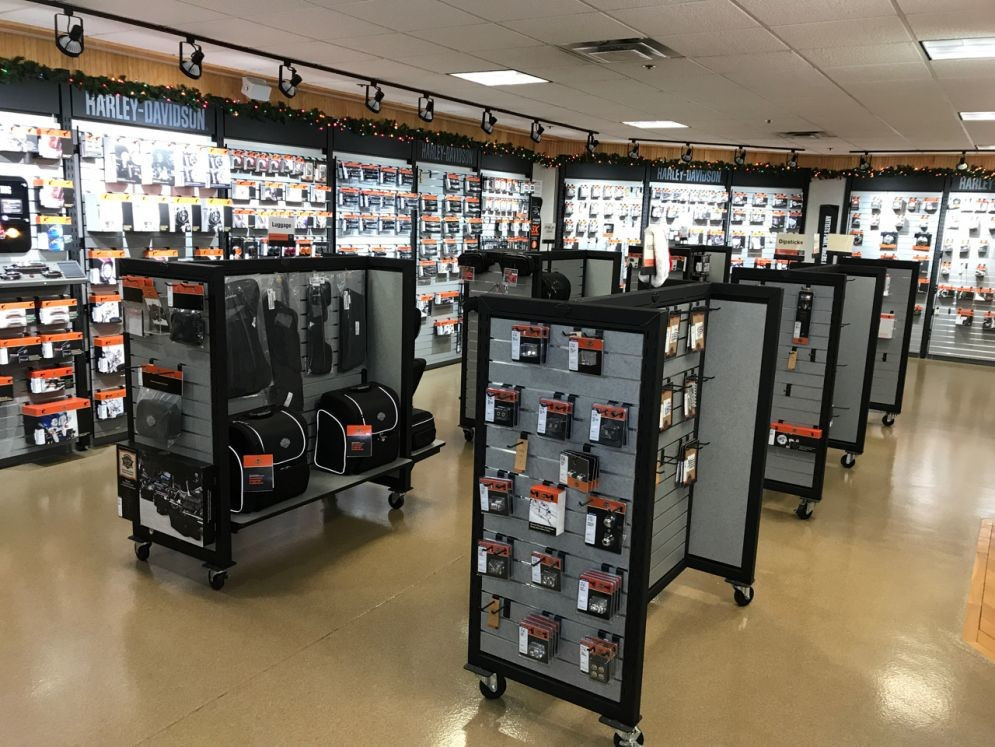Browse Through Our Motorcycle Shop for Professional Suggestions and High Quality Products
Browse Through Our Motorcycle Shop for Professional Suggestions and High Quality Products
Blog Article
Comprehending the Essential Components of a Motorcycle: A Comprehensive Overview for Fanatics
For bike fanatics aiming to elevate their riding experience and guarantee their bikes run efficiently, recognizing the vital elements of a motorbike is vital. Each component, from the engine's elaborate workings to the vital function of the braking mechanisms, not just influences performance but additionally safety and security and convenience. This overview will certainly walk via the fundamental components that every rider need to know with, making it possible for notified selections in both maintenance and possible upgrades. As we begin this expedition, one must ask: exactly how does each element engage to create the smooth adventure every fanatic seeks?
Engine Parts

The camshaft plays a vital function in managing the timing of the engine's shutoffs, making certain the specific opening and closing needed for reliable fuel and air consumption, in addition to exhaust expulsion. This timing is essential to keeping optimal engine performance and effectiveness. In addition, the carburetor or gas injection system, depending upon the motorcycle version, is in charge of blending air with fuel in the correct proportion for combustion.
The cooling system, either air or liquid-based, works to keep the engine's temperature level within operational limitations, preventing getting too hot and ensuring durability - motocross parts nz. Each part, thoroughly made and integrated, adds to the smooth operation of the engine, specifying the motorcycle's power output and overall performance
Transmission System
Indispensable to the motorcycle's performance, the transmission system guarantees efficient power transfer from the engine to the wheels. This system comprises numerous essential parts, consisting of the clutch, gearbox, and last drive, each playing an essential duty in translating the engine's power right into movement. The clutch, commonly operated by a hand bar, offers to involve and disengage the engine from the transmission, enabling smooth gear changes and regulated acceleration.
The gearbox, frequently described as the transmission proper, contains a collection of equipments that bikers can by hand move with to readjust the bike's speed and torque result. These gears are organized in a series that enables the motorbike to increase efficiently and maintain ideal engine efficiency throughout various speeds. The majority of motorcycles utilize a sequential gearbox, requiring the biker to move gears in a predetermined order.
Braking Systems
While comprehending the transmission system is vital to utilizing a motorcycle's power, similarly crucial is the capacity to regulate and quit that power effectively, which is where braking devices enter into play. Brakes are vital for safety and security and performance, offering the cyclist with the necessary control to browse different surfaces and conditions. Generally, motorbikes feature 2 sorts of stopping systems: disc brakes and drum brakes.
Disc brakes are a lot more common in modern bikes due to their remarkable efficiency. They contain a brake disc, caliper, and pads. When activated, the caliper squeezes the brake pads versus the spinning disc, transforming kinetic energy into heat, consequently slowing the wheel. This system provides better warm dissipation, regular efficiency, and enhanced stopping power, particularly in wet conditions.
Alternatively, drum brakes, though much less typical, are still discovered in some motorcycles. They work by pressing brake footwear versus the internal surface area of a drum affixed to the wheel. While typically less effective in heat why not check here dissipation and quiting power, drum brakes are simpler and a lot more cost-efficient.
Understanding these braking systems' subtleties permits cyclists to keep their motorbikes effectively and appreciate the engineering that ensures safe and effective stopping.
Suspension and Steering
Suspension and guiding systems are crucial parts that significantly influence a bike's handling and ride comfort. The suspension system, consisting of forks at the front and shock absorbers at the rear, absorbs road irregularities, boosting stability and control. Front forks, inverted or normally telescopic, compress and rebound to minimize impacts, while back shock absorbers keep tire call with the road, essential for grip and safety and security.
Guiding, centered around the handlebars, links the cyclist to the motorcycle's directional control. The guiding head bearings ensure smooth operation, permitting precise ability to move. Correct positioning and upkeep of these bearings are crucial for predictable steering response and minimizing motorcyclist tiredness.
The suspension's adjustability is another essential facet; preload, damping, and rebound setups permit personalization to suit different riding designs and conditions. This flexibility is necessary for optimizing efficiency, whether browsing urban roads or taking on rugged tracks. Innovations like digital suspension systems supply real-time adjustments, improving ride high quality throughout diverse surfaces.

Electrical Solutions
After ensuring a smooth and regulated adventure with reliable suspension and steering systems, attention turns to the electrical systems, an essential element of contemporary motorbikes. These systems play a crucial function not only in beginning the engine however also in powering different elements that enhance the capability and safety and security of the motorcycle.
At the heart of a bike's electric system is the battery, which shops electric power essential for starting the engine and powering supporting systems - motorcycle shop. The generator or generator, coupled with the rectifier-regulator, ensures the battery stays charged while the bike is in operation, converting mechanical energy into electric power and preserving voltage levels
The ignition system, another vital element, is accountable for igniting the air-fuel mixture in the engine's cylinders. Modern motorcycles usually use a digital ignition system, offering higher efficiency and integrity contrasted to standard systems.
Illumination systems, including headlights, tail lights, and indications, are also vital, ensuring presence and security for the biker. Additional digital components such as sensing units, control systems, and shows add to innovative functions have a peek at this website like gas shot management, anti-lock braking systems (ABDOMINAL), and digital control panels, additionally boosting the riding experience.
Final Thought
A detailed comprehension of a bike's essential parts, consisting of the engine, transmission system, braking devices, suspension, guiding, and electric systems, is important for enthusiasts intending to maximize convenience, efficiency, and safety. Mastery of these aspects permits informed decisions regarding maintenance and upgrades, eventually enhancing the riding experience. By integrating this expertise, bikers can guarantee their bikes run at peak efficiency and reliability, thereby maximizing both enjoyment and long life of their automobiles.
For motorbike fanatics looking to elevate their riding experience and ensure their bikes run efficiently, moved here understanding the important components of a bike is paramount.Integral to the motorbike's performance, the transmission system ensures effective power transfer from the engine to the wheels.While understanding the transmission system is crucial to taking advantage of a motorcycle's power, similarly crucial is the capability to regulate and stop that power efficiently, which is where stopping systems come right into play. Normally, motorcycles feature two types of stopping systems: disc brakes and drum brakes.
A detailed comprehension of a motorbike's crucial parts, including the engine, transmission system, braking devices, suspension, guiding, and electrical systems, is vital for lovers aiming to optimize efficiency, comfort, and security.
Report this page